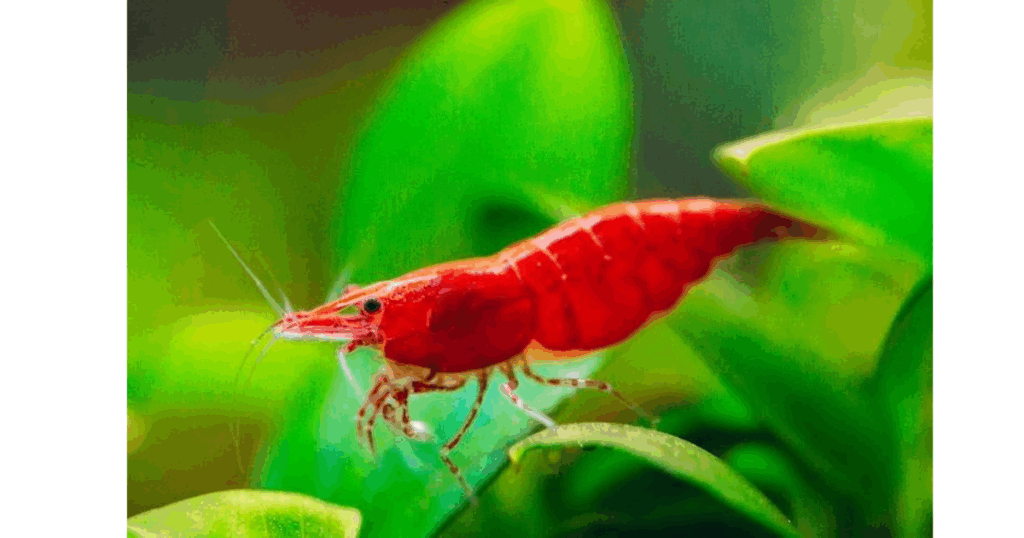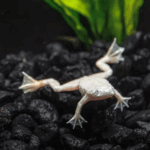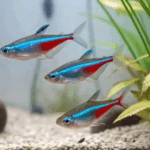Introduction: Why Cherry Shrimp Are the Hidden Gems of Aquariums
Cheery Shrimp, If you’re looking for a pop of color and a low-maintenance addition to your aquarium, cherry shrimp might just be your perfect match. These tiny freshwater shrimp scientifically known as Neocaridina davidi — are beloved by aquarists of all levels for their vibrant red hues, peaceful nature, and surprisingly helpful habits like cleaning up algae and uneaten food.
Whether you’re a beginner setting up your first shrimp tank or an experienced hobbyist expanding your freshwater community, offer a rewarding and fascinating experience. They’re more than just beautiful they’re also active, easy to breed, and incredibly fun to watch.
In this comprehensive guide, we’ll cover everything you need to know about cherry shrimp: from setting up their tank to feeding, breeding, and even solving common problems. Let’s dive in!
What Are Cherry Shrimp?
Cherry shrimp, or Neocaridina davidi, are one of the most popular freshwater shrimp species in the aquarium world and for good reason. Native to Taiwan, these tiny invertebrates are prized for their deep red coloration, peaceful temperament, and ease of care, making them perfect for beginners and experts alike.
There are several types and grades of shrimp, ranging from standard red to Fire Red, Painted Fire Red, and even Bloody Mary varieties. The intensity of their color often depends on their genetics and care including what you feed them and the quality of their environment. The redder the shrimp, the higher the grade, and yes the more eye-catching they are in your tank.
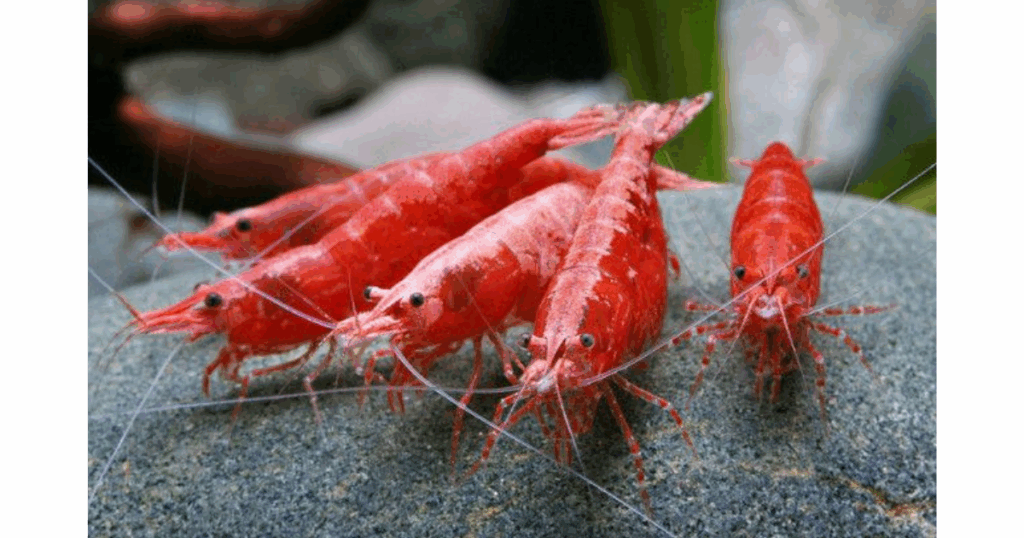
Shrimp are part of the larger Neocaridina genus, meaning they are hardy, adaptable, and well-suited for life in a wide range of freshwater conditions. They typically grow to about 1–1.5 inches long and live up to 1–2 years with proper care.
Their role in your aquarium isn’t just decorative cherry shrimp are natural algae eaters and detritus scavengers. They’ll help keep your tank clean while adding constant motion and life to your aquatic setup.
If you’re planning to build a shrimp-focused aquarium or add them to a peaceful community tank, understanding their unique traits and needs is key. Up next, let’s talk about why they’re such a great choice for freshwater tanks.
Why Cherry Shrimp Are Great for Freshwater Tanks
Cherry shrimp aren’t just a pretty face they’re one of the most functional and beginner-friendly additions you can make to a freshwater tank. Whether you have a nano tank, a planted aquascape, or a peaceful community setup, cherry shrimp bring multiple benefits that go beyond aesthetics.
1. They’re Nature’s Clean-Up Crew
These little scavengers work around the clock to nibble on algae, leftover food, and biofilm. While they won’t replace your regular tank maintenance routine, they definitely help reduce waste and contribute to a cleaner ecosystem. In planted tanks especially, cherry shrimp help prevent algae from taking over your decor and plants.
2. Peaceful Tank Mates
Cherry shrimp are non-aggressive and mind their own business. They do best in tanks with other peaceful species like small tetras, rasboras, snails, or even just other shrimp. Their calm demeanor means less stress for everyone — including you.
3. Low Maintenance, High Reward
They don’t need complex equipment or intense care routines. As long as you keep water parameters stable and avoid copper-based medications, cherry shrimp thrive in simple setups. Plus, watching them graze and interact is surprisingly therapeutic.
4. Fun to Breed
Cherry shrimp breed readily in freshwater tanks, and you might soon find your tank full of tiny baby shrimp (called shrimplets). With the right conditions, a small colony can grow naturally, adding even more color and movement over time.
Ideal Tank Setup & Water Conditions for Cherry Shrimp
Creating a proper home for your cherry shrimp is the key to keeping them healthy, active, and vibrant in color. Thankfully, these freshwater shrimp are quite adaptable — but there are a few setup essentials you’ll want to get right from the start.

Tank Size & Type
While cherry shrimp can thrive in nano tanks as small as 5 gallons, we recommend starting with at least a 10-gallon tank. Also check, How to Set Up a 10 Gallon Fish Tank (Beginner’s Guide)
This gives you more stable water parameters, extra space for planting, and room for a growing colony. They’re great for both shrimp-only setups and peaceful community aquariums.
Substrate & Plants
A dark substrate (like Fluval Stratum or Seachem Flourite) helps bring out the rich red color of cherry shrimp and encourages natural grazing behavior. Live plants such as Java moss, Anubias, and Water wisteria are perfect because they offer surfaces for biofilm to grow (a favorite snack) and provide hiding spaces for molting shrimp and baby shrimplets.
Water Parameters
Cherry shrimp prefer stable, clean water with these ideal conditions:
- Temperature: 72–78°F (22–25.5°C)
- pH: 6.5–7.5
- Ammonia/Nitrite: 0 ppm
- Nitrate: < 20 ppm
- GH (General Hardness): 6–8 dGH
- KH (Carbonate Hardness): 3–6 dKH
A gentle sponge filter is ideal it provides biological filtration without creating strong currents or risking baby shrimp being sucked in. Weekly 10–20% water changes help keep nitrates in check.
Important: Avoid using any products containing copper it’s toxic to shrimp.
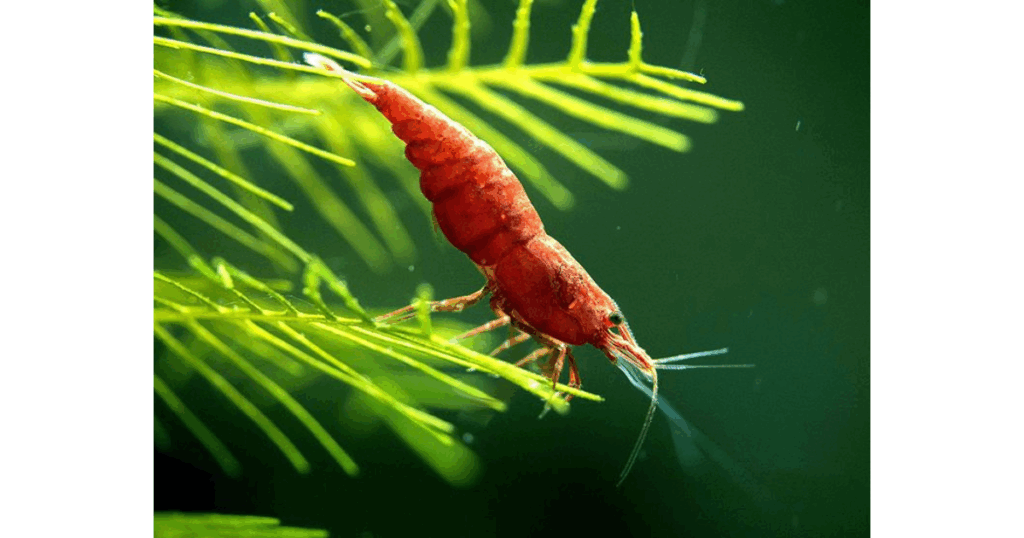
Lighting & Décor
Low to moderate lighting is enough if you’re using hardy plants. Add rocks, driftwood, or cholla wood for natural hiding spots and extra surfaces for algae and biofilm growth.
Cycle First!
Before adding any shrimp, ensure your tank is fully cycled. Cherry shrimp are sensitive to ammonia and nitrites, even in small amounts.
With the right setup, cherry shrimp will feel safe and thrive letting their bright colors and quirky behavior shine.
Potential Challenges & How to Solve Them
Even though cherry shrimp are hardy and beginner-friendly, they do come with a few unique challenges. The good news? Most problems can be prevented or fixed with a little know-how and attention.
Water Quality Sensitivity
Shrimp are more sensitive than fish when it comes to water parameters. Even small amounts of ammonia or nitrite can be deadly. Always:
- Make sure your tank is fully cycled before adding shrimp.
- Do regular water testing to monitor ammonia, nitrite, nitrate, pH, GH, and KH.
- Avoid overfeeding, which can spike toxins.
A stable environment is the #1 way to prevent stress and death.
Molting Issues
Molting problems can occur if shrimp don’t get the right minerals, especially calcium. Signs include:
- Shrimp dying during molt
- Shrimp hiding for long periods
- Deformed or incomplete molts
Solution: Use mineral-rich foods or shrimp-specific supplements, and ensure your GH and KH levels are in the ideal range.
Chemical Contamination
Shrimp are incredibly sensitive to:
- Copper-based medications
- Tap water with chlorine or chloramine
- Household sprays or cleaners near the tank
Always use a shrimp-safe water conditioner, and avoid cross-contamination from hands, nets, or equipment.
Predation or Tank Mate Stress
Some fish (even peaceful ones) may see shrimp especially babies — as snacks. Avoid tank mates like bettas, gouramis, or larger cichlids. Choose peaceful companions or go for a shrimp-only tank to ensure safety.
By staying on top of these common issues, your cherry shrimp will live longer, reproduce more easily, and bring even more joy to your aquarium.
Fun Facts & Quirky Behavior of Cherry Shrimp
Shrimp may be small, but they have big personalities — and once you get to know them, you’ll find they’re some of the most entertaining critters in your tank.

Always on the Move
Shrimp are natural scavengers, and you’ll often see them shuffling around plants, gravel, and decorations in search of biofilm or algae. It’s like a tiny cleaning crew working 24/7!
Their constant movement keeps the tank lively, and they often work in little groups, making your aquarium feel bustling and active.
They Change Color (Sort of)
Their red color can brighten or fade depending on their mood, age, diet, and surroundings. A dark substrate and quality shrimp food can really enhance their color.
Fun fact: Female cherry shrimp are usually more brightly colored than males and often larger too!
Fast Breeders with a Twist
In the right conditions, shrimp breed like champs. Females carry fertilized eggs under their tails, “fanning” them until they hatch into teeny-tiny shrimplets. No larval stage just fully formed miniature shrimp!
With no need for special breeding tanks, many hobbyists enjoy watching their colony grow naturally.
Low Drama, High Reward
They don’t fight, bully others, or disrupt the tank. That’s why cherry shrimp are a favorite for peaceful community tanks or aquascaping setups they add color, charm, and functionality without any trouble.
If you love watching nature unfold in miniature, cherry shrimp are endlessly fascinating.
Frequently Asked Questions About Cherry Shrimp
1. How long do cherry shrimp live?
Shrimp typically live for 1 to 2 years, though with excellent care and stable water conditions, some can live a bit longer. Keeping water clean and providing a mineral-rich diet will help extend their lifespan.
2. Can cherry shrimp live with other fish?
Yes — but choose tank mates carefully. Ideal companions are peaceful, small fish like neon tetras, ember tetras, otocinclus, and snails. Avoid aggressive or curious fish like bettas or gouramis, which may nip or eat baby shrimp.
3. How fast do cherry shrimp reproduce?
Very quickly under the right conditions! Females can carry 20–30 eggs and will hatch them in about 3–4 weeks. As long as the water is stable and there are plenty of hiding spots, baby shrimp will thrive.
4. Do I need a filter or heater for cherry shrimp?
Yes — a gentle sponge filter is ideal because it offers filtration without sucking up tiny shrimp. While cherry shrimp can tolerate room temperature, keeping the tank between 72–78°F (22–25°C) with a heater is best for consistent health and breeding.
5. What color variants of cherry shrimp exist?
Cherry shrimp come in various red intensities:
- Standard Cherry Shrimp (light red)
- Sakura Grade (solid red)
- Fire Red (deeper red)
- Painted Fire Red (almost opaque)
Higher-grade shrimp are more vibrant and usually more expensive.
6. How do I improve their color?
Feed high-quality, color-enhancing shrimp foods and provide dark substrates. Genetics also play a big role, so buying from a reputable source helps ensure rich coloration.
7. Will they eat algae in my tank?
Absolutely! shrimp love grazing on soft algae, biofilm, and debris. While they won’t solve serious algae outbreaks, they’re a great part of a balanced clean-up crew.
8. Can I keep cherry shrimp in a nano tank?
Yes! A small group can thrive in a 5-gallon or even 3-gallon setup just ensure stable water quality, plants, and gentle filtration.
Check the links to buy
- Aquarium Filter: A small but powerful aquarium filter is a must. Look for one designed for small tanks (often labeled as a small aquarium filter) to keep your water clean and your fish healthy.
- Heater: If you’re keeping tropical fish, a fish tank heater is essential to maintain a stable water temperature around 75–78°F.
- Lighting: LED lights built into a tank hood are great for both aesthetics and plant growth.
- Thermometer: Helps you monitor the water temperature.
- Water Conditioner: Removes chlorine and harmful chemicals from tap water.
- Gravel/Substrate: Besides looking good, it’s necessary for beneficial bacteria.
- Test Kit: To monitor ammonia, nitrites, and nitrates—critical for tank cycling.

